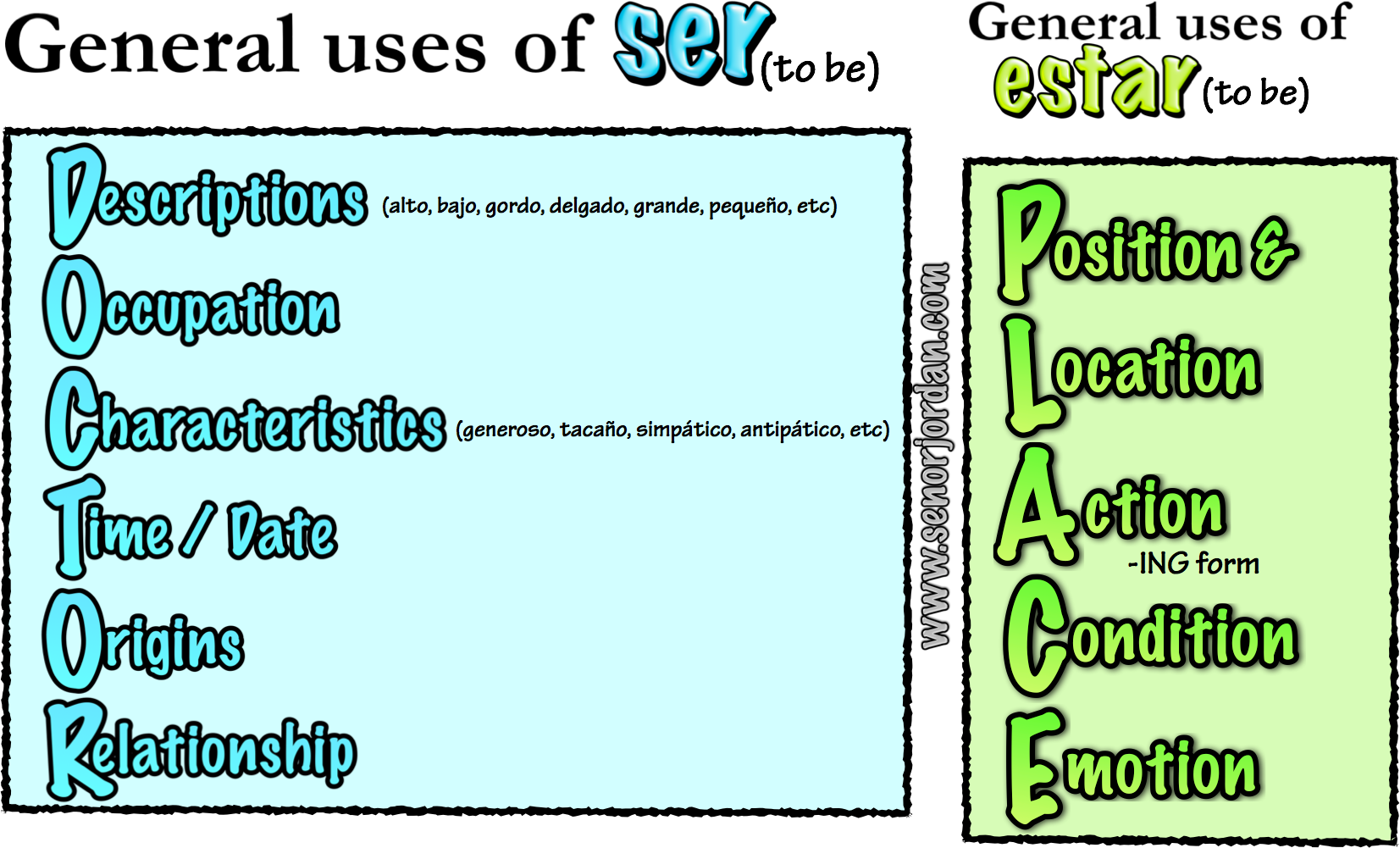Have you ever stumbled upon a Spanish verb conjugation that seemed to defy all logic? Do you find yourself wondering, “Why is it ‘Estoy’ sometimes, but ‘Soy’ others?” Welcome to the wonderful, and sometimes confusing, world of Spanish verbs, where the seemingly simple concept of “to be” can take on multiple forms. The answer lies in the distinction between the verbs “ser” and “estar.” While both verbs translate roughly to “to be” in English, understanding their nuanced meanings and usage is crucial for achieving fluency in Spanish.

Image: goodimg.co
Mastering these verbs is a critical step in mastering Spanish grammar. Why? Because these verbs are used in a multitude of contexts, from simple descriptions to complex grammatical structures. They act as the foundation for expressing states, conditions, locations, and even temporary characteristics. But don’t worry, understanding the differences between “ser” and “estar” is within your reach, and this article aims to break down this grammar conundrum, making it clear and easy to grasp. Let’s dive in!
The Fundamental Difference: Permanence vs. Temporary
Ser: The Verb of Inherent Qualities
The verb “ser” is used to convey inherent qualities, characteristics, or permanent states of being. Think of it as the bedrock of someone or something’s identity. Here’s how it’s used:
- Nationality: “Yo soy estadounidense.” (I am American.)
- Occupation: “Ella es doctora.” (She is a doctor.)
- Intrinsic qualities: “El perro es grande.” (The dog is large.)
- Time or Date: “Hoy es viernes.” (Today is Friday.)
- Relationships: “Mi madre es mi mejor amiga.” (My mother is my best friend.)
Estar: The Verb of States and Conditions
The verb “estar” describes temporary conditions, locations, or states of being. Imagine it as a snapshot of something at a particular moment. Here’s how it’s used:
- Location: “Estoy en la biblioteca.” (I am at the library.)
- Physical and emotional states: “Estoy cansado.” (I am tired.) “Estoy feliz.” (I am happy.)
- Temporary qualities: “La comida está caliente.” (The food is hot.)
- Progress: “Estoy aprendiendo español.” (I am learning Spanish.)

Image: forum.duolingo.com
Real-life examples
Let’s put these differences into action with some everyday scenarios:
- Scenario: You see your friend looking sad.
- Using “estar”: “Juan, ¿por qué estás triste?” (Juan, why are you sad?)
- Using “ser”: “Juan, ¿por qué eres tan sensible?” (Juan, why are you so sensitive?)
- Scenario: You are enjoying a delicious meal.
- Using “estar”: “Esta comida está deliciosa.” (This food is delicious.)
- Using “ser”: “La comida italiana es mi favorita.” (Italian food is my favorite.)
As you can see, “estar” focuses on the temporary state of being delicious, while “ser” describes a permanent preference for Italian cuisine.
Additional Considerations
While the “permanence vs. temporary” rule is a solid starting point, a few specific cases might require further clarification:
1. “Estar” and Location
The verb “estar” is almost always used to express location: “Estoy en casa” (I am at home). A common exception is when describing one’s place of origin. In this case, use “ser”: * *”Yo soy de México.”* (I am from Mexico).
2. “Estar” and Temporary Characteristics
Sometimes, “estar” can be used to describe temporary changes in a person’s state. For example:
- “Juan está enfermo.” (Juan is sick. This is a temporary condition.)
- “Elena está enojada.” (Elena is angry. This is a temporary emotional state.)
3. “Ser” and Passive Voice
In the passive voice, “ser” is used to express an action done to a subject: * “La comida ya está servida.”* (The food is already served.) This is because “servida” (served) is the passive form of the verb “servir” (to serve).
Understanding the Nuances
Mastering the difference between “ser” and “estar” takes time and consistent practice. However, the underlying concept is quite straightforward. By focusing on whether a state of being is permanent or temporary, you’ll be well on your way to using these verbs correctly. Remember to consider the context, and you’ll be speaking Spanish with greater accuracy and confidence.
When To Use Estan
Keep Practicing and Explore Further
The best way to understand the intricacies of “ser” and “estar” is to practice using them in everyday speech and writing. Engage in real conversations, read Spanish texts, and take advantage of online resources like quizzes and interactive exercises. The more you use these verbs in context, the more naturally they will become part of your Spanish vocabulary. Embrace the journey and remember to have fun while learning this beautiful language. ¡Buen provecho!






